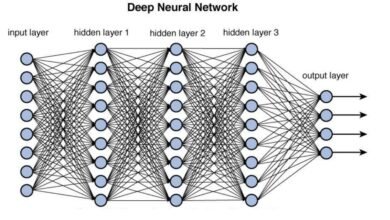Cloud Computing Security: Best of the Future

In today’s digital landscape, cloud computing has become ubiquitous, revolutionizing the way businesses operate and then individuals interact with technology. Addition of all its advantages, this cloud computing presents special security problems that need to be fully resolved. At the core of this digital paradigm shift lies the imperative of cloud computing security.
Defining Cloud Computing Security:
Cloud computing security isn’t merely a set of protocols; it’s a dynamic ecosystem of safeguards meticulously crafted to shield our digital kingdom. It encompasses a labyrinth of measures aimed at preserving the sanctity of data, the integrity of applications. And then resilience of infrastructure within the ethereal confines of cloud environments.
Navigating the Cloudscape:
Embarking on this journey requires traversing a multifaceted landscape fraught with challenges and opportunities. From the dark alleys of data privacy concerns to the sprawling plains of compliance requirements, cloud computing security navigates through a myriad of intricacies with finesse and then precision.
Elements of the Shield:
At its core, cloud computing security is a symphony of elements working in harmony to create an impenetrable barrier against malevolent forces. It’s about mastering the art of access control, weaving intricate layers of encryption, and then orchestrating the dance of vulnerability management with meticulous grace.
The Migration Imperative:
As organizations embark on the odyssey of digital transformation, and then migration to cloud environments becomes not just a choice an imperative. Yet, amidst the allure of scalability and then agility, lurks the specter of risk. Ensuring robust cloud computing security isn’t merely a checkbox on the journey; it’s the cornerstone upon which trust is built.
Beyond the Horizon:
In the ever-evolving realm of cloud computing security, the journey is endless. It’s a perpetual quest for innovation and then resilience, driven by the relentless pursuit of excellence. As we gaze beyond the horizon, we embark on a voyage fueled by curiosity, guided by wisdom, and then fortified by the unwavering resolve to protect what matters most.
Key Components of Cloud Computing Security

Cloud Computing Security of Data Encryption
Data encryption serves as a fundamental pillar of cloud computing security, rendering sensitive information indecipherable to unauthorized entities. Through robust encryption algorithms and then cryptographic techniques, data stored, transmitted, and then processed in the cloud remains protected from interception and exploitation.
Cloud Computing Security in Access Control
Effective access control mechanisms restrict unauthorized access to cloud resources, enforcing strict authentication and authorization protocols. By implementing granular access policies and role-based access controls (RBAC), organizations can also delineate permissions based on user roles and responsibilities, minimizing the risk of data breaches and insider threats.
Compliance and Regulatory Standards
Adherence to industry-specific compliance and regulatory standards is imperative for maintaining cloud computing security. It’s GDPR, HIPAA, PCI DSS, organizations must ensure their cloud deployments comply with applicable regulations, thereby mitigating legal and then reputational risks
Intrusion Detection and Prevention
Intrusion detection and then prevention systems (IDPS) play a pivotal role in fortifying cloud computing security by proactively identifying and thwarting malicious activities. Leveraging advanced algorithms and anomaly detection techniques, IDPS solutions detect suspicious behavior patterns, enabling timely response and then mitigation.
Continuous Monitoring and Auditing
Continuous monitoring and auditing of cloud infrastructure and applications are indispensable for identifying vulnerabilities and then aberrations in real time. By leveraging automated monitoring tools and conducting periodic security audits, organizations can also proactively fortify their cloud computing security posture and ensure compliance with industry best practices.
Best Practices for Enhancing Cloud Computing Security

As organizations increasingly migrate their operations to the cloud, it becomes imperative to fortify defenses against evolving cyber threats. Below, we delve into a holistic approach encompassing best practices for enhancing cloud computing security
Implement Multi-Factor Authentication (MFA):
Strengthening access controls through MFA adds an extra layer of security beyond passwords. Passwords, fingerprints, security tokens, and other then authentication methods make it necessary for users to authenticate themselves, which greatly lowers the possibility of unwanted access.
Cloud Computing Security Embrace Zero-Trust Architecture:
Adopting a Zero-Trust mindset involves verifying every user. Device attempting to access resources, of their location. By assuming that all entities are potential threats, organizations can also enforce strict access controls and then continuously monitor activities, mitigating the risk of insider threats and then external breaches.
Conduct Regular Security Assessments and Penetration Testing:
Proactive measures regular security assessments, penetration testing are crucial for identifying vulnerabilities or addressing they can also be exploited by malicious actors. By simulating real-world attack scenarios, organizations can also uncover weaknesses in their infrastructure and then applications, allowing for timely remediation.
Prioritize Data Loss Prevention (DLP) Strategies:
Safeguarding sensitive data is paramount in the cloud era. Implementing robust DLP strategies involves classifying and then data based on its sensitivity. Encrypting in transit and at rest and other then enforcing policies to prevent unauthorized access or leakage are crucial steps. Monitoring, auditing data access, usage can also help detect, mitigate potential breaches.
Foster a Culture of Security Awareness and Training:
Human error remains a significant threat to cloud security. Educating employees about cybersecurity best practices, recognizing phishing attempts, safeguarding credentials, and then adhering to company policies, is essential. Regular training sessions and then awareness campaigns can also empower employees to become proactive defenders against cyber threats.
Conclusion
Cloud computing security is not merely an option a critical imperative in today’s interconnected digital ecosystem. By adopting a holistic approach encompassing encryption, access control, compliance, intrusion detection, and then continuous monitoring, organizations can also fortify their cloud computing security posture and mitigate evolving cyber threats. In an era defined by digital transformation, proactive measures are essential to safeguarding sensitive data and then preserving trust in the cloud.
Read more: Serverless Architecture





